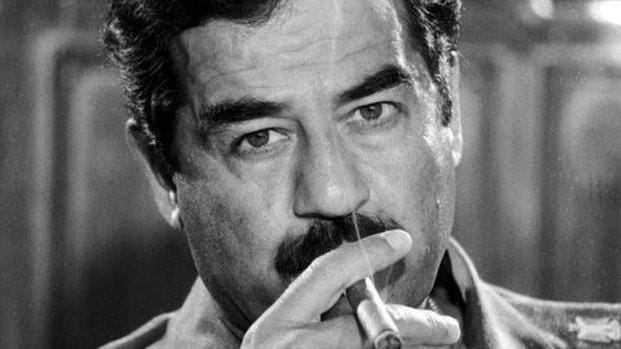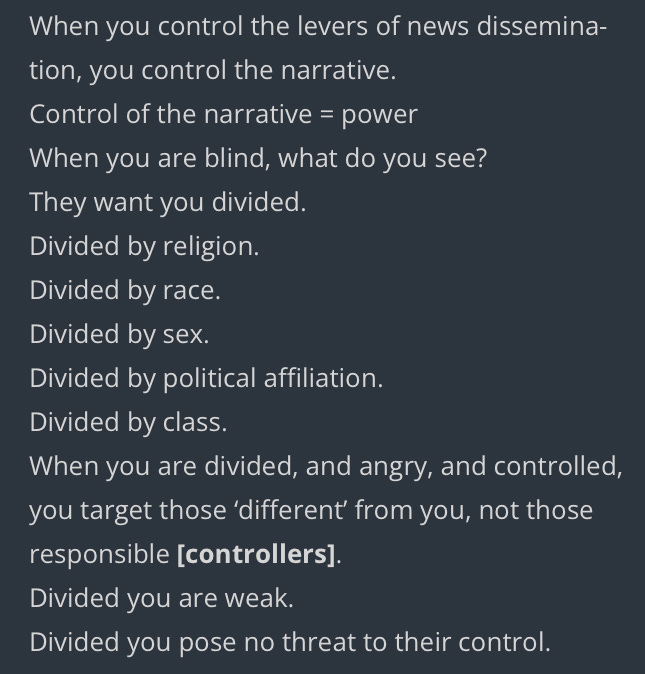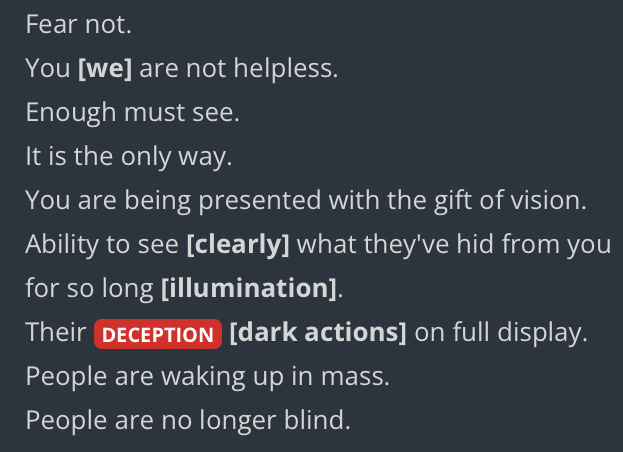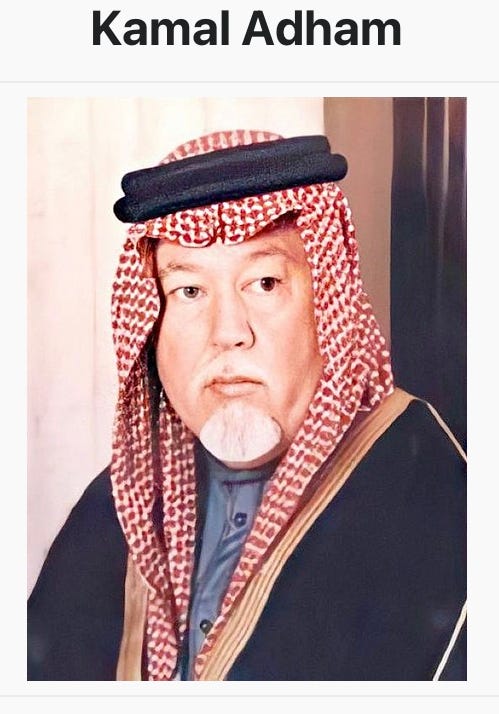We are currently in a nonstop narrative war. The evidence is everywhere, and most people in this community realize that. But we’ve actually been in a narrative war going back many generations.
A narrative war is just a fight for the hearts and minds of the people. Today’s narrative war is for the control of our government. Do the people control our government, or do powerful global elites control it?
How do you fight a narrative war?
It’s all about one thing:
The “key” to a narrative war is information. Whoever controls the information will win a narrative war.
In many of my previous articles, I’ve revealed truth that was hidden behind some major events in our past history. Our history has been a lie. I don’t believe we’ve ever been told the truth about our history.
It’s not just a fight over information, it’s also a fight for truth.
The enemy that we are up against are masters at hiding and manipulating the truth. They constantly lie and deceive the public with absolutely no conscience or second thought. What they claim to be true is inevitably a lie disguised as truth.
Why must they lie to us?
This is an important portion of Q drop 4535:
Controlling the narrative equals power.
Division is the tool of the hidden enemy.
The enemy uses emotions to manipulate the public, especially fear. Fear is a powerful motivator that has been used as a tool to convince the people to believe lies and to hide the truth.
Our history has focused a lot on wars. But do you know why?
Wars have been a focal point throughout our history because of one thing—they are used in the narrative war to promote fear.
Saddam Hussein was painted in the media as the next Hitler of the Middle East. That was a purposeful narrative deployment for a reason. Guess who started that narrative and was directing a narrative play back then?
According to The Seattle Times:
President Bush pressed his verbal war on Saddam Hussein today, suggesting the Iraqi president had surpassed Adolf Hitler in brutality and pledging to ``see his aggression turned back.'' The White House said Bush was preparing the American people for ``any eventuality.''
``Today I am more determined than ever that this aggression will not stand,'' Bush said in Mashpee, Mass., as he embarked on a six-day Republican campaign swing leading up to Election Day next Tuesday.
Does anybody really think that Saddam Hussein was comparable to Adolf Hitler, let alone surpassed him?
Saddam Hussein couldn’t dream of possessing the kind of power that Hitler had during World War 2.
So why would Bush compare him to Hitler?
The answer, is that George H.W. Bush knew that, by invoking Hitler, he could get an emotional response from everyone listening to him in order to create a narrative in preparation for war. That was the only purpose. Bush was going to start a war, and all the talk about hope for a peaceful solution was just window dressing in order to paint himself as the reluctant warrior.
I’ll never forget that term he used back then.
“This aggression will not stand!”
They even mocked that statement in one of my favorite movies, The Big Lebowski.
I love that scene.
It was a memorable line that stuck in the collective mind, and was meant to motivate the people to go to war.
Bush was doing everything he could to convince the American people that, if we didn’t go to war against Saddam Hussein, he was going to threaten the world, just like Hitler. Bush was trying to engage the fear factor in the psyche of the people by implying that a war against Saddam would prevent a world war. The Hitler reference has been a cabal strategy since the end of World War 2.
They still desperately try to portray Donald Trump as someone worse than Hitler. That playbook is no longer working, though. Why? Because Trump is now known as the peacemaker.
Bush was campaigning for members of Congress in the upcoming midterm election when he compared Saddam to Hitler. He tried to paint himself as a peacemaker, too.
More from The Seattle Times:
Bush also said he still plans to give time for the United Nations-imposed economic sanctions against Iraq to work.
``I want desperately to have a peaceful resolution to this crisis,'' Bush told a political gathering in Burlington, Mass. ``I hope there will never be a shot fired in anger. . . . No one wants a peaceful end to this crisis more than I do, but no one is more determined to see his aggression turned back than I am, and I will not change on that,'' he said.
Bush is a liar and may be the most corrupt person who has ever led this country. There is nothing he won’t do for power and control. Deception is always his first choice.
Why?
Do you remember the CIA motto that Bush lived by?
“Admit nothing and deny everything.”
I don’t believe you can work for the CIA and not be a liar.
Q told us about “deception.”
A portion of Q drop #4550 from Jun 30, 2020:
Are you ready to see clearly more of what’s been hidden?
It’s time to illuminate more of the deception. Now I will reveal the enemy’s dark actions back in 1990 that led us into the Gulf War.
President Bush was busy preparing the American people for war against Saddam Hussein, and by portraying him as the next Hitler, he was laying the groundwork.
But do you know the history of the relationship between George H.W. Bush and Saddam Hussein?
Saddam Hussein invaded Kuwait on August 2, 1990.
But do you know what happened in the months before Saddam invaded Kuwait?
According to Exploring Real History:
The Bush Administration repeatedly overrode internal objections to its efforts to funnel aid to Baghdad. By the fall of 1989, international bankers had cut off virtually all loans to Saddam. On October 31st, Baker called the Secretary of Agriculture, Clayton Yeutter, and pressed for a billion dollars in new agricultural-loan guarantees for Iraq despite the fact that the Agriculture Department and other agencies wanted to limit or eliminate additional funds.
James Baker was the Secretary of State and has always been George H.W. Bush’s right-hand man.
Saddam Hussein was saber rattling and sponsoring terrorism, which is why the bankers cut off loans to Iraq. He also wasn’t paying back his loans. This was in 1989, when George H.W. Bush was president. People within his own administration were against giving Saddam any financial aid, but Bush overrode their objections and forced them to give tax payers money to Saddam in financial aid.
More from Exploring Real History:
In January, 1990, President Bush waived congressional restrictions on Iraq's use of the Export-Import Bank, and in doing so overlooked new evidence that Iraq was testing ballistic missiles and stealing nuclear technology. In April, Saddam boasted that he had chemical weapons and would “burn half of Israel."
Around that time, the Commerce Department tried to stop the flow of United States technology to Iraq, but its efforts were stymied by the White House.
"The President does not want to single out Iraq," one senior White House official explained, according to classified minutes of an April 19th White House meeting.
Everyone in the world knew Saddam was an evil dictator, including Congress. But Bush waived any restrictions on Iraq acquiring anything that they wanted, including advanced weapons technology.
Saddam was testing ballistic missiles, stealing nuclear technology and boasting about his chemical weapons stockpiles. None of that prevented President Bush from giving Saddam favored treatment and helping him to build up his weapons of war.
Bush was bending over backwards and using his authority to help arm the very guy that, just months later, he would be comparing to Hitler.
But why? Why was Bush arming the next “Hitler?”
Deception is the key to “distraction,” and distraction has always been a useful tool for the CIA.
I’m sure everyone remembers the lead up to the Gulf War. It was playing out daily in the media.
But did the media tell us what was really happening in the lead up to the war with Saddam?
More from Exploring Real History:
As late as May, 1990, just three months before Iraq's invasion of Kuwait, the Bush Administration was still sharing intelligence information with Iraq. In July, Bush officials pushed for additional agricultural loans to Iraq, and rebuffed efforts by the Defense and Commerce Departments to restrict the export of some dual-use technology. At the end of July, Bush opposed congressional efforts to impose sanctions on Iraq.
Bush and the CIA were still sharing intelligence with Saddam and giving him agriculture loans so he could spend his hard money on weapons. They also allowed him to buy weapons technology and prevented Iraqi sanctions.
Are those the type of things you do for an adversary, or enemy?
That’s the lead up to the war that the American people were never told.
More from Exploring Real History:
All told, the Reagan and Bush Administrations ended up providing Saddam Hussein with more than five billion dollars in loan guarantees, thereby enabling him to become a major military power in the Persian Gulf and, of course, to invade Kuwait.
We funded Saddam’s invasion of Kuwait. Those were loan guarantees backed up by taxpayer money. They were never paid back.
Was it purposeful?
Do you want to know why Bush was giving Saddam so much aid as he built up his military for war?
How do you think Saddam became the leader of Iraq?
According to Reuters:
Roger Morris, a former State Department foreign service officer who was on the NSC staff during the Johnson and Nixon administrations, says the CIA had a hand in two coups in Iraq during the darkest days of the Cold War, including a 1968 putsch that set Saddam Hussein firmly on the path to power.
Morris says that in 1963, two years after the ill-fated U.S. attempt at overthrow in Cuba known as the Bay of Pigs, the CIA helped organize a bloody coup in Iraq that deposed the Soviet-leaning government of Gen. Abdel-Karim Kassem.
The same CIA that was overthrowing governments in Latin and South America to install puppet dictators was doing the same thing in Iraq. George H.W. Bush has been the one behind most of these coups. He is the one who installed Saddam Hussein as a dictator in Iraq.
Bush was establishing a “New World Order” long before he ever mentioned it in a speech. The CIA has been toppling governments since at least the early 1950s.
More from Reuters:
"As in Iran in '53, it was mostly American money and even American involvement on the ground," says Morris, referring to a U.S.-backed coup that brought the return of the shah to neighbouring Iran.
Kassem, who had allowed communists to hold positions of responsibility in his government, was machine-gunned to death. And the country wound up in the hands of the Baath party.
At the time, Morris continues, Saddam was a Baath operative studying law in Cairo, one of the venues the CIA chose to plan the coup.
Do you think that’s just a coincidence that Saddam was in Cairo at the same time that the CIA was also there planning a coup in Iraq?
More from Reuters:
In fact, he claims the former Iraqi president castigated by President George W. Bush as one of history's most "brutal dictators" was actually on the CIA payroll in those days.
"There's no question," Morris says. "It was there in Cairo that (Saddam) and others were first contacted by the agency."
In 1968, Morris says, the CIA encouraged a palace revolt among Baath party elements led by long-time Saddam mentor Ahmed Hassan al-Bakr, who would turn over the reins of power to his ambitious protégé in 1979.
"It's a regime that was unquestionably midwived by the United States, and the (CIA's) involvement there was really primary," Morris says.
A guy who worked for the State Department and the National Security Council claims Saddam Hussein was on the CIA payroll before they launched a coup and helped install him as a dictator in Iraq. Does that sound far fetched? Isn’t that the same exact template as Manuel Noriega?
Noriega was on the CIA payroll before Bush had him installed as a dictator in Panama to help the CIA traffic cocaine through Latin America. Then Bush ordered an invasion of Panama to arrest Noriega in order to shut him up during the Iran-Contra scandal.
Was Bush going to war to shut up Saddam Hussein, too?
Do you think that it’s just a coincidence that both Manuel Noriega and Saddam Hussein were customers of the corrupt BCCI (Bank of Credit and Commerce International,) along with the CIA and the National Security Council?
Both dictators were puppets of the CIA and George H.W. Bush.
So if Saddam was Bush’s puppet, why did he invade Kuwait? Did Bush actually want him to invade Kuwait?
There was a face to face meeting with the United States ambassador to Iraq and Saddam just weeks before the Kuwait invasion. Was this meeting to deter Saddam from invading Kuwait?
According to Foreign Policy:
In a now famous interview with the Iraqi leader, U.S. Ambassador April Glaspie told Saddam, ‘[W]e have no opinion on the Arab-Arab conflicts, like your border disagreement with Kuwait.’ The U.S. State Department had earlier told Saddam that Washington had ‘no special defense or security commitments to Kuwait.’ The United States may not have intended to give Iraq a green light, but that is effectively what it did."
The ambassador told Saddam that the United States wasn’t concerned about his border dispute with Kuwait, and the State Department told him that the United States had no commitment to defend Kuwait either.
The Bush administration wasn’t deterring Saddam’s invasion of Kuwait, they were encouraging it.
More from Foreign Policy:
Our article was focused on the issue of whether Saddam was deterrable, and the key issue that concerned us about the Glaspie meeting was whether she had conveyed a clear deterrent threat to Saddam, or whether she might have unintentionally given him reason to think he could go ahead and absorb Kuwait without facing a strong military response from the United States.
There were no words of deterrence in this last-minute meeting with Saddam. It sure seemed more like a green light.
But who was giving Saddam the green light, and why?
More from Foreign Policy:
Her very first point in response is to thank him for the opportunity to discuss these matters directly, and she then says that "President Bush, too, wants friendship." Her next point is to tell Saddam that "the President had instructed her to broaden and deepen our relations with Iraq," and she reminds Saddam that though "some circles" might oppose that policy, "the U.S. administration is instructed by the President." And then she adds that "what is important is that the President has very recently reaffirmed his desire for a better relationship" and he has shown that desire by opposing some sanctions bills.
In short, her initial response to Saddam is to try to reassure him of America’s friendly intentions, and to try to convince him that his suspicions are mistaken. It also seems clear that Glaspie is simply following the instructions she had been given.
April Glaspie was the ambassador and was following the instructions of her boss, President George H.W. Bush.
More from Foreign Policy:
The meeting then ends on a friendly note, but when Saddam raises the question of his border dispute with Kuwait, Glaspie responds that "she had served in Kuwait 20 years before; then as now, we took no position on these Arab affairs."
What are we to make of all this? As noted, it seems clear that Glaspie didn’t bungle her assignment: She was doing what the Bush administration wanted at this crucial meeting.
Did Bush want a war with Iraq?
Was it a distraction, and if so, from what?
As I brought up in my last article, during the lead-up to the Gulf War, there was something happening that was gaining momentum and lots of news coverage. It was the biggest banking scandal in history—the BCCI scandal was the biggest money laundering operation ever exposed, and the CIA was deeply involved.
But there was a reason Bush was especially panicked about this banking scandal.
According to the New York Times:
During his decade as an internal auditor for the Bank of Credit and Commerce International here, Vivian Ambrose knew all too well the bank's unwritten rules.
Some loan documents, for example, were off limits to the bank inspectors, including him. Instead, they were handled personally and confidentially by the inner circle of two dozen executives who kept the bank's secrets.
Now, thanks to a sheaf of documents that have come tumbling into view in the last several days, along with data from a recent New York indictment against the bank and testimony by a former top B.C.C.I. executive last week in Congress, the supposed extent of that fraud can be laid bare.
Taken together, the recent disclosures portray a bank that took money from more than a million depositors around the world and became a personal piggy bank for its Arab and Pakistani owners and its favored customers. For its best customers, millions of dollars were advanced, often without documentation and sometimes in violation of the bank's own lending limits. The depositors, virtually all of whom are outside the United States, now stand to lose heavily.
BCCI expanded rapidly around the world and had branches in over 70 countries. Many of them were in third world countries, where poor depositors and businesses would lose all of their money. When this fraudulent bank was exposed, there was upwards of $20 billion missing.
It was a gigantic Ponzi scheme, where they were taking money from depositors around the world and giving them as loans to their favored clientele. Those loans weren’t ever meant to be paid back.
How big of a scam was this bank?
More from the New York Times:
Front men often stood in to mask the identity of the real borrowers or purchasers. The Federal Reserve Board believes that the use of front men ultimately enabled B.C.C.I. to buy control of First American Bankshares Inc., Washington's leading banking institution, run by Clark M. Clifford, the prominent lobbyist and lawyer who represented B.C.C.I. when it first began buying banks in the United States.
As losses mounted, the bank apparently hatched a scheme to cover them up by making interest payments on loans with deposits from other customers. The idea was to deceive auditors from detecting the red ink in its loan portfolio. The scheme also involved offshore funds parked in lightly regulated countries that could be drawn down to patch up losses elsewhere.
And when capital was needed to absorb further losses, the bank artificially pumped up its share price by lending money to existing shareholders to buy more stock. The proceeds from the stock would help balance the bank's books, but actually the bank was merely taking depositor money and investing it in the bank.
They were literally stealing depositors’ money from around the world, then hiding that fact by shifting money to the bank branches that were under the most scrutiny. They hid money in offshore accounts in the Cayman Islands and elsewhere. The Cayman Islands have always been a CIA hotspot.
They were also taking depositors’ money and giving loans to favored customers to buy stock in the bank in order to drive up the stock price. That would increase the banks value and make it look profitable. It was also a magnet for dictators, arms dealers, drug traffickers and of course, the CIA.
More from the New York Times:
Since the early 1980's, the company's reputation made banking officials uneasy -- a "stateless" bank that operated in the United States and about 70 other countries, chartered in Luxembourg, run by Pakistanis, owned by Arabs, headquartered in Britain and serviced by outposts in the Cayman Islands, a well-known haven for private banking.
Police and intelligence experts nicknamed B.C.C.I. the "Bank of Crooks and Criminals" for its penchant for catering to customers who dealt in arms, drugs and hot money.
"We knew that the bank had financial troubles but not that there was massive fraud," said John Atkinson, the bank inspector for the Cayman Islands and a member of the international team that shut down B.C.C.I. "I was very surprised by the extent and size of the fraud."
We know that George H.W. Bush had ties to this bank because not only was the CIA and NSC using it for their Iran-Contra deals, but Manuel Noriega, Saddam Hussein and the Medellin cartel were also customers.
More from the New York Times:
Using codenames like "Sandstorm" for B.C.C.I. and "Fork" for its Cayman Islands affiliate, called the International Credit and Investment Company, Price Waterhouse sketched out in 45 pages what it termed "one of the most complex deceptions in banking history."
It included phony loans, unrecorded deposits, secret files and illicit share-buying schemes -- all funneled through a global network of shell companies, friendly banks and wealthy Arab front men to cover up the scam.
BCCI was deliberately not recording some of its deposits.
Why?
Because on their books, those deposits are considered obligations and liabilities. If they don’t record them, then they can use the money to cover more of their losses around the world, and it makes them look more profitable.
But don’t miss that last part—BCCI was hiding the fraud using wealthy Arab front men.
Who were they?
According to the New York Times:
Two weeks ago, New York City prosecutors sat down with lawyers for Sheik Kamal Adham, a former chief of intelligence in Saudi Arabia, and told them their client was running out of time: he was about to be indicted in the multibillion-dollar fraud and conspiracy case surrounding the Bank of Credit and Commerce International.
For the sheik, this posed a quandary. He could ignore the indictment, remain in his mansion in Jidda, and simply not travel to countries that had easy extradition arrangements with the United States. He could also come to New York, face the charges and risk imprisonment. Or, he could try to cut a deal.
Sheik Kamal chose the deal, one that after two weeks of brutal negotiations will cost him more than $100 million in fines and restitution, but almost guarantee he will stay out of American prison -- and one that also requires him to provide information .
Kamal Adham was the head of Saudi Arabia’s Intelligence agency when the BCCI money laundering operation was happening. His home was in Jidda, which is also called Jeddah. That’s a major data point. So many things are going to be connected to Jeddah.
Rather than fight the charges, he chose to pay a $100 million fine in order to avoid prison. If that’s not an admission of guilt, then I don’t know what is. Other than money laundering, he was also guilty of being one of the front men for BCCI to purchase the biggest bank in Washington DC.
That bank was First American Bank.
BCCI gave them loans in order to purchase the bank that were never going to be paid back. Then when they didn’t pay back the loans, guess who took control of the bank? That’s how BCCI illegally took control of First American Bank. BCCI was laundering money through First American Bank for drug traffickers and arms dealers.
It was a CIA operation.
But who is Kamal Adham?
According to Wikipedia:
Kamal Adham joined the Saudi government as the chief of external intelligence agency in 1964. King Faisal appointed him as head of Al Mukhabarat Al A'amah (later renamed General Intelligence Presidency (GIP)) in 1965, making him the first president of the agency. Adham's tenure lasted for fourteen years until 19 January 1979 when he was dismissed and replaced by Turki bin Faisal in the post.
Additionally he was the primary liaison of the CIA for the Middle East as a whole from the mid-1960s to 1979 when he left the GIP. He fostered and maintained nascent ties with several Arab intelligence services, as many were slowly creating independent institutions to serve their respective governments. Adham closely worked with George H. W. Bush, who was appointed CIA director in 1976.
Kamal Adham was the “primary liaison” for the CIA in the Middle East and “closely worked with George H.W. Bush.”
BCCI was a George H.W. Bush operation.
All the major players involved had ties to Bush and the CIA.
Money laundering for the CIA was the purpose of the BCCI bank.
The CIA needs constant funding outside of Congressional control. The problem was that Congress was now investigating the BCCI scandal.
Bush needed a distraction.
That’s the reason Bush needed a war with Saddam. Countries were raiding branches of BCCI and gathering evidence. Congress was also now issuing subpoenas and calling witnesses to testify in their investigations.
Time to change the narrative.
Kuwait became the sacrificial lamb.
But did you know that Bush has deep ties with Kuwait going back to the 1950’s? One of the sites for his Zapata Offshore drilling company was in Kuwait.
And did you know that BCCI created a company called Kuwait International Finance Company (KIFCO).
I wonder what kind of documents and evidence might have been destroyed because of the Gulf War, and how much wealth was plundered?
Was it a cover-up?
In my next article, we will dive deeper into Prince Alwaleed’s history, and expose why war is so profitable for the cabal.
Badlands Media articles and features represent the opinions of the contributing authors and do not necessarily represent the views of Badlands Media itself.
If you enjoyed this contribution to Badlands Media, please consider checking out more of Joe’s work for free at Joe Lange’s Substack.
Badlands Media will always put out our content for free, but you can support us by becoming a paid subscriber to this newsletter. Help our collective of citizen journalists take back the narrative from the MSM. We are the news now.









Another excellent example of your gifts of research and tying disparate bits of information together. The BCCI corruption certainly explains how the CIA in increasingly corrupt methods, has come to dominate the world of black operations, including many coups, and the world of black funding via their drug trade, as well as the trafficking and money laundering to ‘clean’ their sources.
What is very revealing about the players in this article is applicable all across the cabal and their minions….that is there is no loyalty among themselves. You’ve clearly described how Bush and his CIA colleagues funded and used many high ranking members of countries, families and banks to prepare their steady march to the desired one world government. In this case, you’ve shown how Bush had close ties to Sadam; created in him a well funded and well weaponized friend ahead of his plan to divert attention from the widespread corruption by destroying the puppet he created. He had to make the ‘war’ last long enough to establish the long term war benefits for the cabal.
I know you’re headed to the Bush-bin Liden relationship so I won’t comment about it. It occurs to me the announcement by Rumsfeld was made the day before 911, where he said over 3 trillion dollars was missing from DoD. The false flag on 911 stopped the reporting on this completely; it also gave a false reason to go to the Middle East.
When the world hears what you have reported, plus where you’re going, there truly will be NO place the participants and contributors to the coverups can hide. Evil knows no limits, do it?
The wide web of connections ARE being used and will ultimately lead to the demise of the cabal’s plans for humanity.
Thank you, Joe, for your role in this narrative war!! God bless you.🙏🙏
When Iraq plundered Kuwait we were told the Iraqis stole whatever they could get their hands on: all the gold, money and personal effects of the royal family and its citizens. We were also told there were Russian advisors on the ground in Baghdad. That took all the heat off of the US having the American People believing Saddam fueled by Russia. The Kuwaiti people suffered.
I want to know more about Oliver North.
I can honestly say I hate the Bushes. Thank you for this awesome research. So many things going on at this time in the early 1990s. Iraq, Central America, the Balkans, Africa (Rwanda). It all connects.